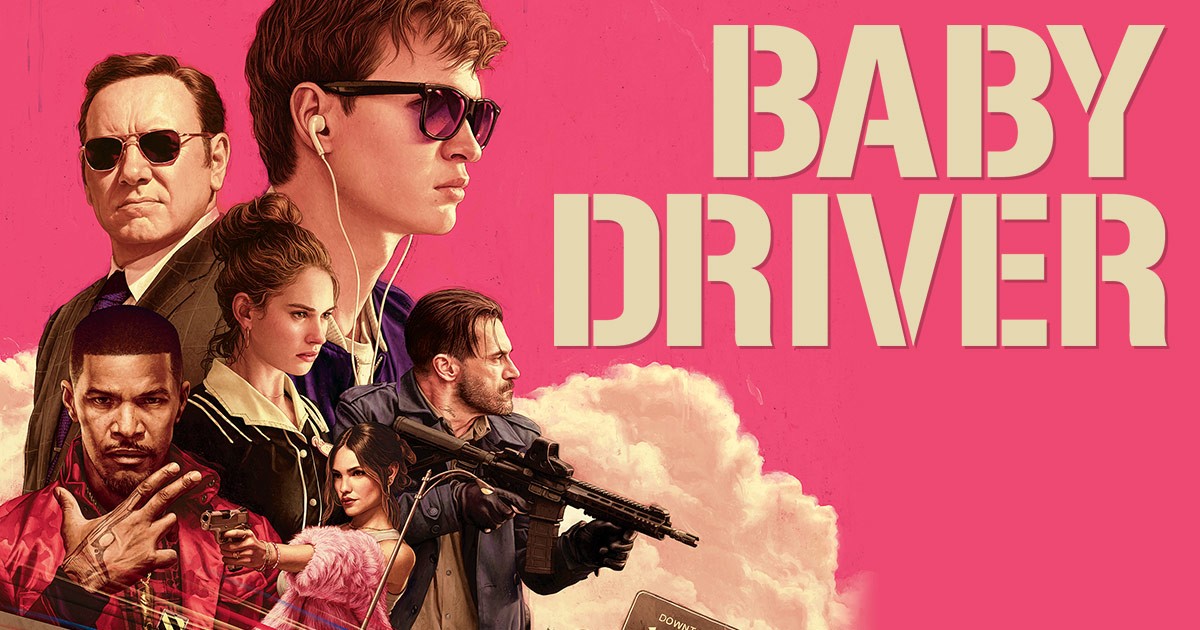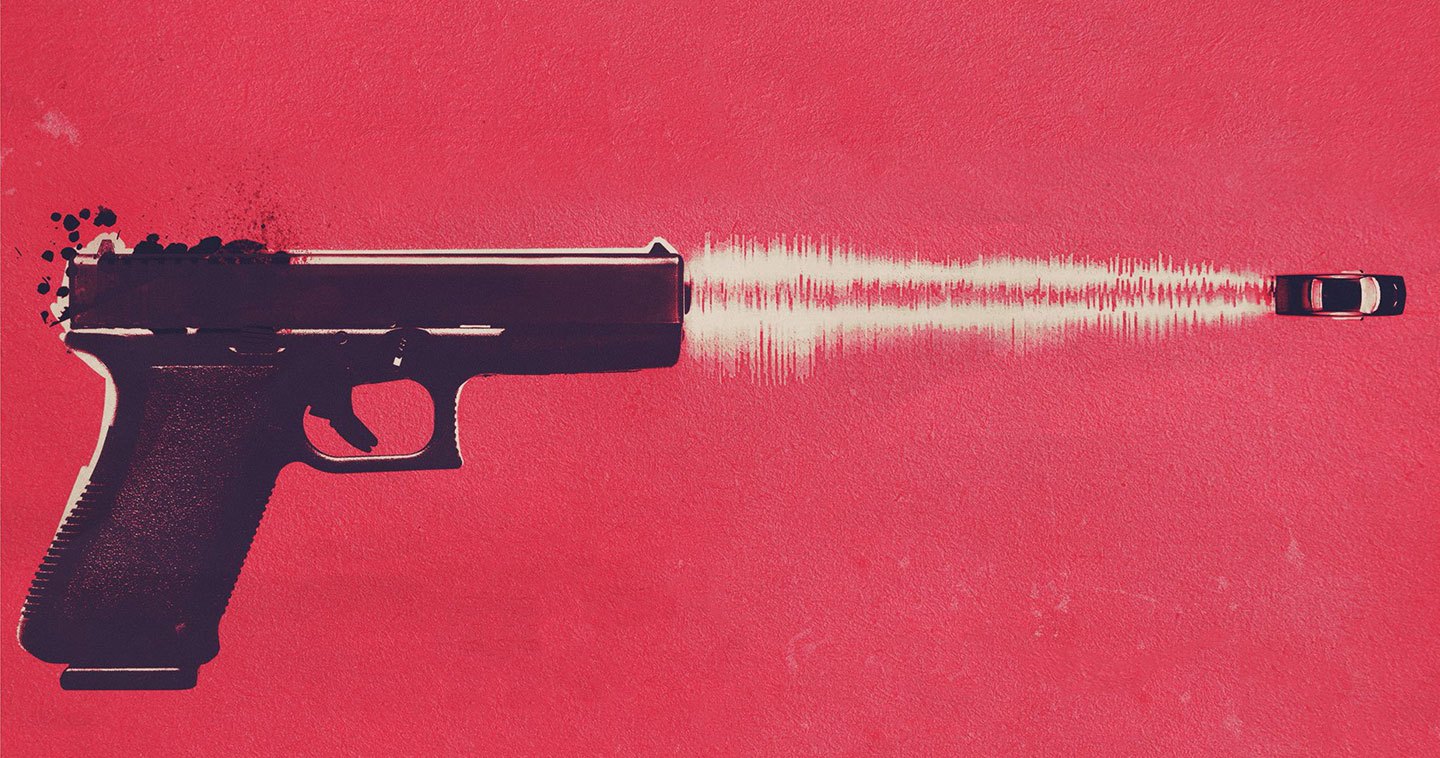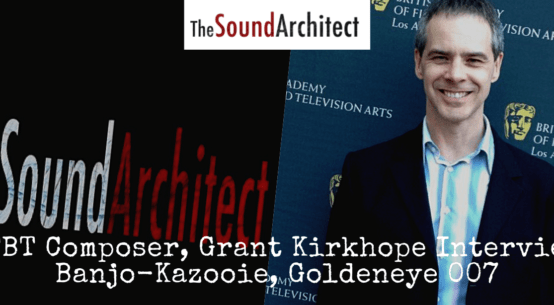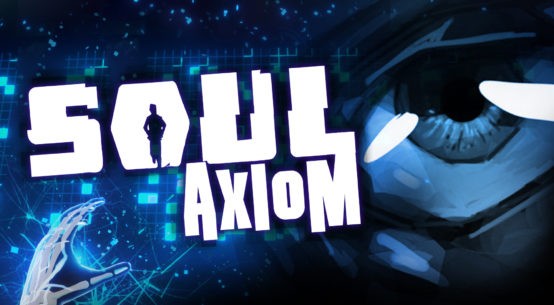
Article by Jake Basten
Edited by Katie Tarrant
Director: Edgar Wright
Composer: Steven Price
Supervising Sound Editor: Julian Slater
Director Edgar Wright’s (Hot Fuzz, Scott Pilgrim vs the World) newest release tells the story of Baby (Ansel Elgort), a getaway driver for a gang of robbers trying to get away from a life of crime. He has just one last job before he can run away in to the sunset with his girlfriend Debby (Lily James) and escape the criminal underworld. Baby suffers from tinnitus, so he listens to music all the time to drown out the ringing in his ears. He also relies on his ‘killer’ tracks during getaways to make his escape. This lays the backdrop for a stellar movie where the audio is the centrepiece that the film revolves around. You won’t be surprised that this went down very well with us at The Sound Architect!
Music
The soundtrack that Wright has compiled is the perfect accompaniment. The tracks burst out of the screen starting with “BellBottoms” by The John Spencer Blues Explosion, which Wright apparently had earmarked for inclusion in a car chase scene for nearly twenty years. Many of the sounds are synced to the music throughout the film, and this thrives the most in the car chase scenes, as well as in the first two scenes of the film. As the tension grows throughout the first car chase scene, the beats of the music, the sound effects, and the picture edits start to combine in a dizzying pattern where they are alternately in sync and opposite one another. This creates an unrelenting rhythm between the visuals and the sound that is both comprehensible and thrilling.
Tracks such as “Unsquare Dance” by Dave Brubeck, “Harlem Shuffle” by Bob and Earl and “Brighton Rock” by Queen continue the positive and nostalgic feel through the film. Meanwhile Steven Price‘s score counterpoints the energetic soulful soundtrack by filling the gaps with suspenseful, moody atmospheres to show us the dark side of Baby’s work, as well as reverb-laden Phil Spector-esque tracks to accompany the tender moments between Baby and Debby.
Wright plays with our expectations as each new track is introduced. This first happens with the welcome surprise of “Harlem Shuffle” where most of the audience will be expecting House of Pain’s “Jump” which sampled the opening brass break from the original. By picking songs that have also enjoyed success as samples in hip-hop tracks, Wright allows himself some freedom as to whether go with the original soul or disco song, or whether to bring us the more modern hip-hop rendition. There are several times in the film where my expectations were subverted, bringing in versions that I hadn’t heard, and keeping the tracks fresh.
A lot of the songs play in Baby’s earphones, so only he, and the audience, can hear it. This creates an interesting space where the music plays both a diegetic and non-diegetic role in the film. A clever technique was when Baby takes one earbud out and the music dropped out of the corresponding speaker, opening up the mix on one side to more on-screen detail, including the dialogue as well as car sound effects and other character’s movements. This does, however, create a slightly awkward disconnect between the music and the sound when Baby is facing the camera. The music is being played from Baby’s perspective, while the rest of the sounds are being heard from the camera’s perspective so there is an opposition of direction. I wasn’t sure about this at first as it felt wonky to my ears, however I warmed to it and it actually works very well as a device to bring the audience’s attention to the sound and make us feel closer to Baby.

Sound Design
The sound design is beautifully stylised throughout. Ambiences are full and panned well, providing just the right amount of bedding, without affecting the dialogue. As above, sound effects are mostly synced to the music throughout the film, which makes the aesthetic whole and cohesive. The sounds of the cars and buy zolpidem tartrate 10 mg gunfire are intricate and detailed while packing a wallop, and the few gory moments are salaciously satisfying – as good as any Tarantino. In the final chase scene, the gunfire being synced to the music is exciting and incredibly enjoyable, adding some comedy to the high tension.
I loved that Baby’s tinnitus ringing in his ears is used as a dramatic device in moments of tension, for example when Baby witnesses or is worried about the other thieves being violent. We are used to hearing this type of sound in war films when a grenade goes off, like a sensory overload. It is also recycled as a wipe sound effect between scenes, which creates cohesion and familiarity of the sound.
Other sounds such as phones ringing are also used with a lot of creative and stylistic license to great effect. In general, we as listeners are used to hearing sounds before we see their source in films, for example a door creaking open as a cue in a horror film. However, Julian Slater (Supervising Sound Editor) slowly builds many of these sounds in to ambiences through an entire scene even when the source is not part of that environment at all, before revealing the source 10-20 seconds later in a totally new location. This stretches out the life of the sound to the point that the listener isn’t even aware that it is out of place, until the picture moves on and finally we can place the source of it – this is a great example of how Slater builds and releases tension in very subtle ways.
Conclusion
Baby Driver is an enthralling audio playground and a great surprise for the often-stale action genre. The storytelling is aided immeasurably by the musical accompaniment which in turn is made all the more effective by the sharp editing of both the picture and the thrilling sound design. It’s been too long since I have seen a film that uses music as a central cinematic device, and I am placing Baby Driver in the good company of American Hustle and Silver Linings Playbook for excellent audio-driven storytelling. A must-see.
LINKS
Official
Baby Driver
Edgar Wright
Steven Price
Baby Driver
Edgar Wright
Steven Price
Baby Driver
Edgar Wright
Steven Price




